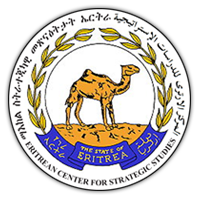March 2, 2019
A Brief Glimpse at Tesennei Sub-zone
by Keset Gebrehiwet | The Gash Barka region is known as the breadbasket of Eritrea. Some sub-zones of the region border Ethiopia and Sudan. This region is blessed with rich, fertile land. Riverbanks and various strategic dams are also assets of this region. This region is also rich in livestock. Being a sub-zone of this region, Tesennei possesses great agricultural assets. The sub-zone is also well known for its trade activities. Agriculture, tourism, trade and industry, and aquaculture activities are among the dominant activities within the sub-zone. Notably, the sub-zone has also registered steady economic development.
The Tesennei sub-zone is also a land port where vast trade activities are carried out. People from across the country flock to this sub-zone to buy and sell various items, as well as to engage in sightseeing and tourism. According to official documents, the sub-zone has a total of 1,850 of wholesale
and retail shops. Regarding tourism, the sub-zone currently has 50 hotels and a total of 305 cafes and restaurants delivering services. Importantly, the Ministry of Tourism conducts monitoring and evaluation on the establishments in order to ensure compliance with safety, health, and other standards. The Tesennei sub-zone has two soap factories and one that bottles water. Additionally, there is also production of cash crops, such as ground nuts and sesame, in the sub-zone.
Aquaculture activities at the Fanko Dam are making a positive difference in the supply of fish. So far, 40 fishermen have received training in the preservation and harvesting of fish. The administration of the sub-zone, in collaboration with the Ministry of Marine Resources, has offered training and provided refrigerators to fishermen in the sub-zone. Aquaculture activities at the Fanko Dam have helped improve the living standards of local fishermen, while ensuring a large, fresh supply of fish to residents of the sub-zone.
In 2017, the administration of the sub-zone carried out land leveling activities and redistributed land. According to Mr. Idris Ahmed Sraj, Head of Economic Development in Tesennei sub-zone, two hectares of farmland have been given to each family and one hectare to individuals. To date, 13,693 hectares of farmland have been allocated, while approximately 12,000 hectares have been reserved as enclosures. A total of 215 hectares have also been provided to large-scale farmers. For the approximately 12,000 reserved hectares, farmers are permitted to conduct agricultural activities per a one-year lease agreement.
This year, the sub-zone has registered about 378mm of rainfall. Notably, this is nearly double the amount of last year (last year’s total was 208 mm). Although there has been an increase in rainfall, distribution has been uneven, with some parts of the sub-zone receiving far more than others. A total of 8,350 hectares have been cultivated during this year’s farming season. Encouragingly, expectations are that this year’s harvest will be great.
Speaking about the distribution of land, Mr. Idris revealed that large-scale farmers had been the main beneficiaries of land, with traditional farmers being, at times, disadvantaged. Accordingly, fundamental reforms were necessary in order to help ensure that residents of the area had equal access to the available resources.
One of the great aspects of the sub-zone is the cohesion amongst its inhabitants. For example, inhabitants have come together to support the families of martyrs. This year, a total of 100 hectares of farmland was cultivated, in collaboration with the Ministry of Labor and Social Welfare, to support the families of martyrs. These activities were carried by the residents. Additionally, approximately 280 quintals of agricultural produce was then distributed to the families of martyrs.
Since trade is so prevalent in the region, ensuring compliance with health, safety, and other standards is a priority of the local administration. For example, the municipal authorities check items passing through the region in order to ensure consumer safety (e.g. confiscating goods that are expired). The authorities also try to control smuggled items. Merchants are asked to provide evidence for clearance during renewal of licenses. Products that fail to meet regulations are confiscated and disposed of and if merchants or firms fail to comply with regulations their licenses are revoked.
According to Mr. Idris, the officials of the sub-zone do not feel controlling prices is not advisable. Rather, merchants and firms are encouraged to compete, which should ensure the best prices for consumers. In terms of supporting local producers’ access to markets, Mr. Idris stated that while the Red Sea Corporation traditionally purchases local producers’ products, this year farmers are selling their harvest by themselves.
Across the sub-zone, around 2000 hectares have been reserved for fruit and vegetable farms. Due to the excellent conditions, as well as the considerable support from various organizations and the local administration, farmers in the area have been producing an abundance of fruits and vegetable and contributing to meet local demands.
Notably, the sub-zone also has a large number of livestock. This means the sub-zone is one of the country’s largest producers of dairy and meat products. As well, local farmers are able to take their livestock to receive veterinary services in Fanko, Tesennei, and a newly-opened center in Aligidir.
The importance of the availability of veterinary services should not be overlooked since Tesennei sub-zone is a large geographical area and also borders Sudan, which raises the risk of the spread of animal diseases. Mr. Idris revealed that regular check-ups and veterinary services are conducted. After livestock or products are certified, they can then enter the local market. As well, all items that from Eritrea must first be checked and certified before being exported.
As a final point, Mr. Idris encouraged farmers and all service providers in the sub-zone to work hard and maintain their high quality of services. He also noted that the local administration, as well as other government bodies, were ready, willing, and able to support local farmers and service providers with help and encouragement.



